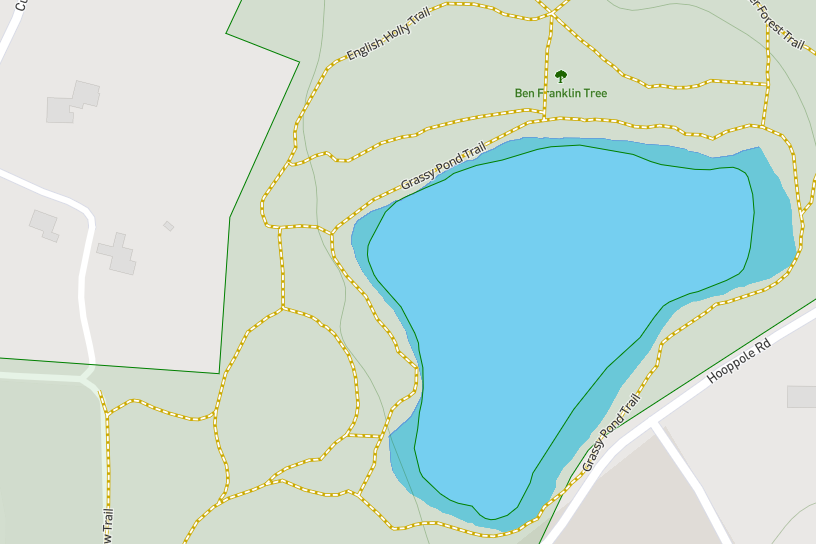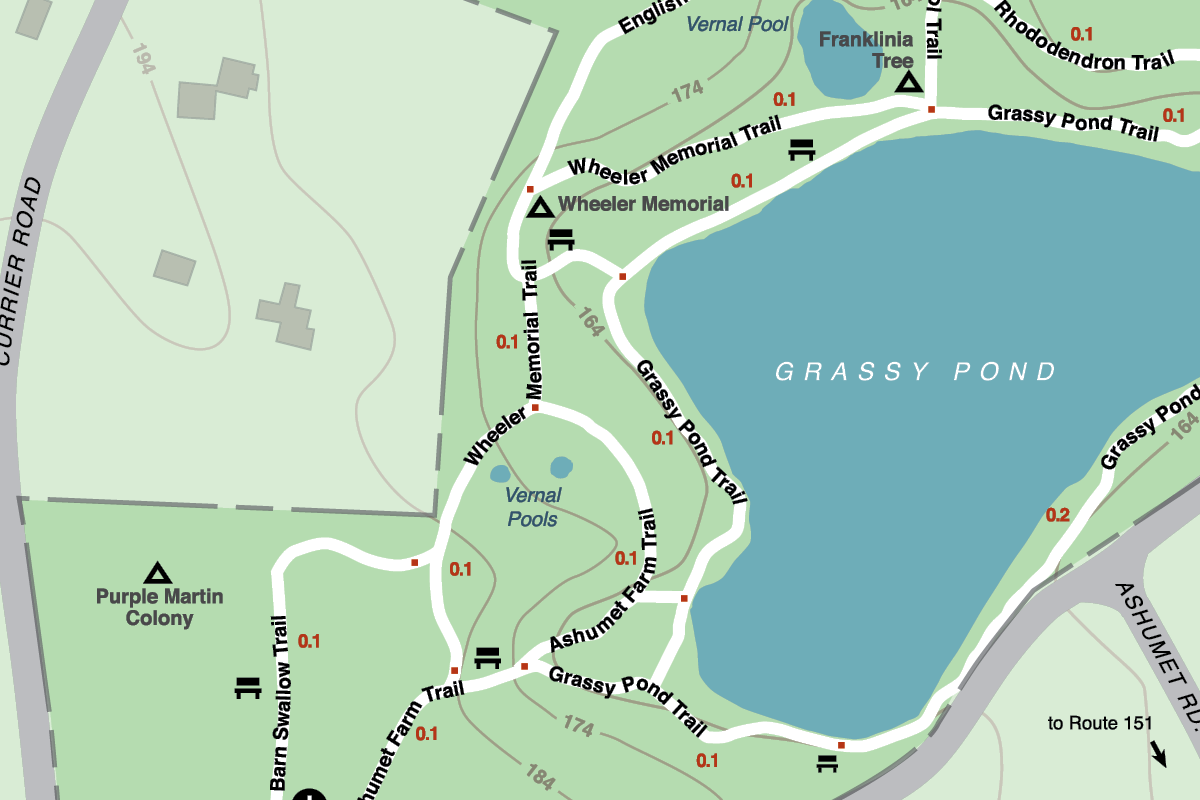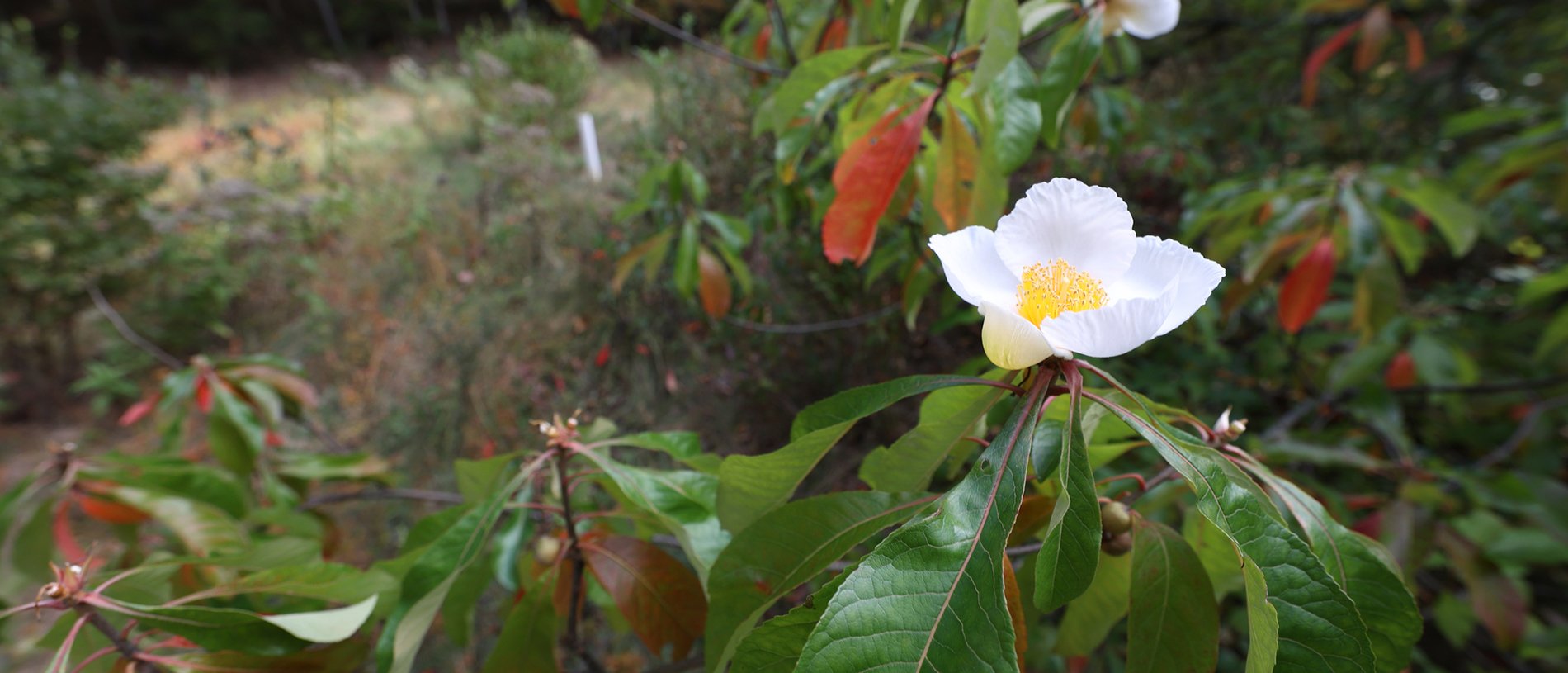Trails at Ashumet Holly
Explore 1.5 miles of trails at Ashumet Holly. Take the Mystery Trail to see the tallest holly on the property, along with a secluded natural vernal pool.

Digital Trail Map
Use your smartphone to navigate the sanctuary. View the map

Download the Trail Map
Trail Descriptions
Ashumet Farm Trail
The trail leads away from Swallow Barn and meanders through the fields where crops including corn, strawberries and asparagus were once grown. Today the fields are mowed annually to maintain early successional habitat, fend off invasive plants, and encourage a diversity of wildlife. Northern Bobwhite are frequently heard here, especially in the spring. The northern stretch of the Ashumet Farm Trail is a great place to look upward for Baltimore and orchard oriole nests hanging in the mature black locust trees.
English Holly Trail
Along this wooded trail you will notice an abandoned herring run stretching in a north to south direction. This was an unsuccessful attempt to bring herring (alewife) to nearby Ashumet Pond in the late 1800’s. This canal was hand-dug the entire distance to the shores of the Atlantic. Once completed, water entering from the pond simply seeped into the extremely porous substrate and never traveled the distance. The effort was abandoned and no other attempts were made to fill the canal.
Mystery Tree Trail
Here you will find a magnolia tree dotted with drill holes from the Yellow-bellied Sapsucker. Close by, inhale the musky aroma of the Japanese cedar, the national tree of Japan. Next to the sanctuary’s tallest holly (labeled), stands a twin-trunked holly that is actually two trees growing together. Look closely at the leaf differences.
Wheeler Memorial
The first holly plantings on Wilfred Wheeler’s farm took place at this site. These trees were propagated or transplanted starting in 1925. Many of the trees here are over 100 years old. Look for #11 ‘Goldie’, which boasts unique yellow fruit. This is one of the first hollies to lose its fruit to the sanctuary’s wintering robins.



